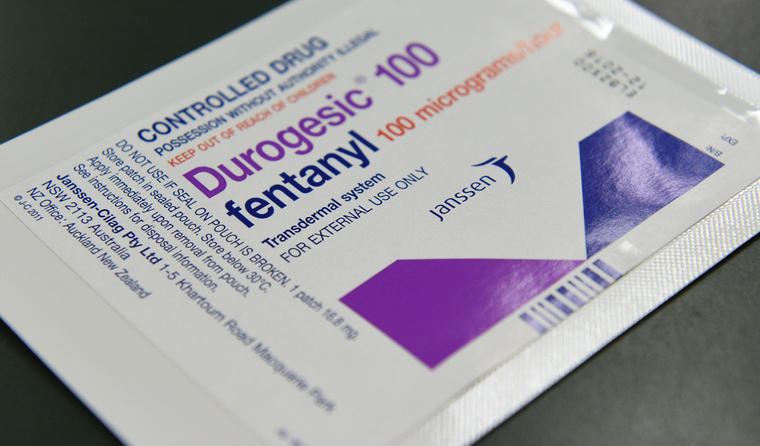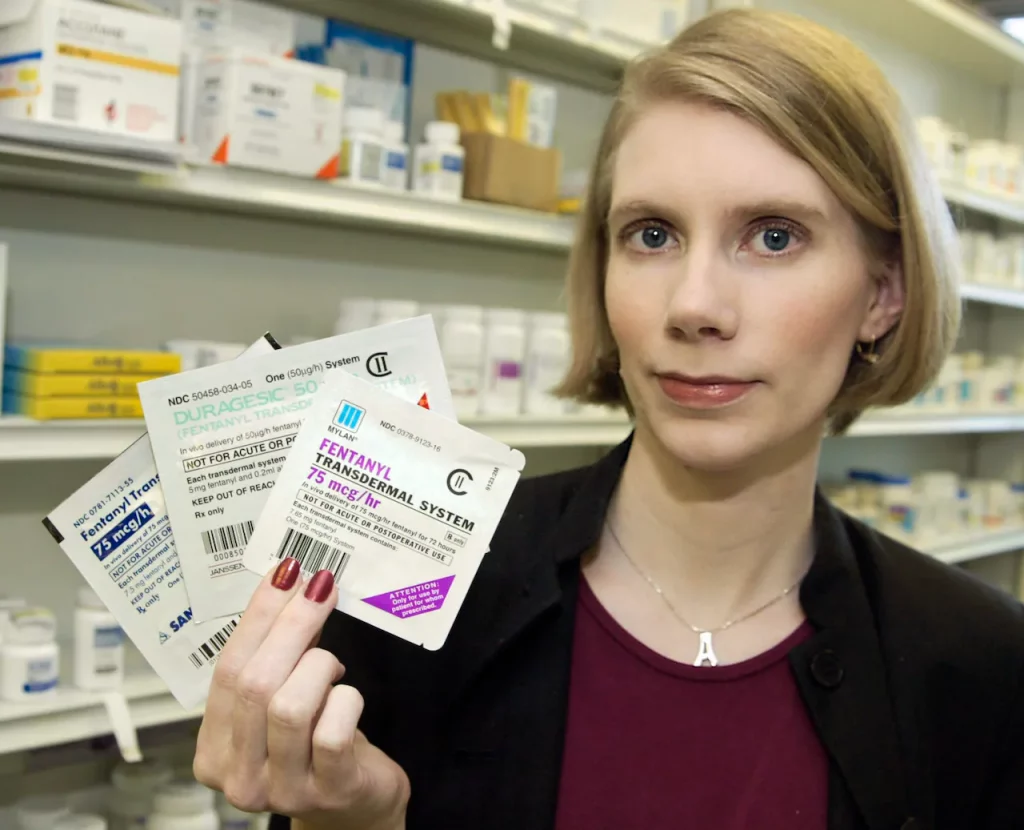How to Prevent Accidental Exposures to Fentanyl Patches

What are fentanyl patches?
Fentanyl patches are a form of medication used to manage chronic pain. Fentanyl is a potent synthetic opioid that is much stronger than morphine, and the patches deliver a controlled dose of the drug through the skin over a period of several days.
The patches are applied to the skin and release fentanyl through a membrane into the bloodstream. They are typically used when other pain medications, such as nonsteroidal anti-inflammatory drugs (NSAIDs) or weaker opioids like codeine, are not effective or cause unacceptable side effects.
Fentanyl patches are only available by prescription and should be used under close medical supervision. They can be dangerous if misused, and overdoses can be fatal. It is important to follow the prescribing doctor’s instructions carefully and not to use more than the recommended amount.
According to the FDA, Accidental exposure to Fentanyl patches is a leading cause of poisoning in children. Young children, in particular, have died or become seriously ill after being exposed to a skin patch containing fentanyl.
What does a fentanyl patch do to you?
Fentanyl patches work by delivering a potent synthetic opioid called fentanyl into the bloodstream through the skin. The medication then binds to opioid receptors in the brain and spinal cord to reduce the sensation of pain. Fentanyl is much stronger than other commonly used pain medications such as morphine or oxycodone, and the patch provides a controlled dose of the drug over a period of several days.
The effects of fentanyl can include:
1. Pain relief: Fentanyl is a powerful pain reliever and can effectively manage severe or chronic pain.
2. Feelings of euphoria: Fentanyl can produce feelings of pleasure or euphoria, which can lead to abuse and addiction.
3. Drowsiness: Fentanyl can cause drowsiness, sedation, and fatigue, which can affect a person’s ability to operate machinery or perform tasks that require alertness.
4. Respiratory depression: Fentanyl can depress breathing, which can be dangerous and even fatal, especially when taken in high doses or in combination with other substances.
5. Nausea and vomiting: Fentanyl can cause nausea and vomiting, especially when first starting the medication or when the dosage is increased.
It is important to follow the prescribing doctor’s instructions carefully when using fentanyl patches and to be aware of the potential risks and side effects. Misuse of fentanyl patches can be dangerous and even life-threatening.
Is fentanyl patch same as morphine?
No, Fentanyl and morphine are both potent opioids used to manage severe pain, but they are not the same medication. Fentanyl is a synthetic opioid that is more potent than morphine, meaning that a smaller amount of fentanyl is needed to produce the same level of pain relief as a larger amount of morphine.
Fentanyl patches are transdermal patches that slowly release the medication into the bloodstream over a period of 72 hours. They are used for chronic pain management in patients who require around-the-clock pain relief.
Morphine is a natural opioid derived from the opium poppy. It is typically administered orally, intravenously, or through other methods such as injection. It is used to manage moderate to severe pain and is often used in a hospital or clinical setting.
While fentanyl and morphine are both opioids and can be used to manage pain, they have different potency levels, administration methods, and side effect profiles. It is important to follow the instructions of a healthcare provider when using either of these medications.

How to Avoid Accidental Exposures to Fentanyl Patches
While fentanyl patches are an effective pain management tool, accidental exposure to fentanyl can be life-threatening, especially for children and non-opioid tolerant individuals. In this section, we will discuss in detail how to avoid accidental exposure to fentanyl patches.
1. Store Fentanyl Patches Properly
The first step in avoiding accidental exposures to fentanyl patches is to store them properly. Fentanyl patches should be stored in a cool, dry place, away from direct sunlight and heat. They should also be stored out of reach of children and pets, in a location that is not easily accessible to them. The patches should be kept in their original packaging until it is time to apply them.
2. Dispose of Used Fentanyl Patches Properly
After using a fentanyl patch, it should be disposed of properly. Used patches should be folded in half, sticky side in, and flushed down the toilet immediately. This is the safest way to dispose of the patch and ensures that it will not be accidentally ingested by children or pets.
3. Do Not Cut or Alter Fentanyl Patches
It is important not to cut or alter fentanyl patches in any way. Cutting the patch or altering its shape can increase the risk of accidental exposure, as it can release too much fentanyl into the body at once. If a fentanyl patch is too large, it should be folded in half, sticky side in, and discarded as described above.
4. Wash Hands After Applying Fentanyl
Patches It is important to wash your hands thoroughly after applying a fentanyl patch. This will help to remove any residual fentanyl that may be on your hands and reduce the risk of accidental exposure. You should also avoid touching the patch after it has been applied to your skin.
5. Cover Fentanyl Patches with Adhesive Tape
To reduce the risk of accidental exposure, fentanyl patches should be covered with adhesive tape. This can help to prevent the patch from accidentally detaching from the skin and reduce the risk of it being ingested by children or pets. However, it is important to ensure that the tape does not cover the entire patch, as this can interfere with the patch’s ability to deliver the medication.
6. Educate Family Members and Caregivers
If you are using fentanyl patches, it is important to educate your family members and caregivers about the potential risks of accidental exposure. They should be aware of the proper storage and disposal of fentanyl patches and should be able to recognize the signs and symptoms of fentanyl overdose. They should also know what to do in the event of accidental exposure, such as calling 911 immediately.
7. Monitor Patients Closely
Patients using fentanyl patches should be closely monitored for signs of overdose, especially during the first few days of treatment or when the dose is increased. Signs of a fentanyl overdose include slow breathing, confusion, dizziness, severe sleepiness, and small pupils. If you or someone you know experiences any of these symptoms, seek medical attention immediately.
8. Be Mindful of Other Medications and Substances
Fentanyl can interact with other medications and substances, such as alcohol and benzodiazepines, to increase the risk of overdose. It is important to inform your healthcare provider about all medications and substances you are taking before using fentanyl patches. It is also important to avoid drinking alcohol or taking benzodiazepines while using fentanyl patches.
9. Use Fentanyl Patches Only
Fentanyl patches should only be used by the person for whom they were prescribed. Sharing fentanyl patches with others, even those with similar pain conditions can increase the risk of accidental exposure and overdose. It is also important to follow the prescribed dose and application instructions carefully to avoid accidental exposure.
10. Be Aware of the Signs and Symptoms of Fentanyl Overdose
Finally, it is important to be aware of the signs and symptoms of fentanyl overdose, as early recognition and treatment can be life-saving. These include:
• Slow or shallow breathing
• Severe sleepiness or drowsiness
• Confusion or disorientation
• Dizziness or lightheadedness
• Small pupils
• Bluish lips or nails
• Cold and clammy skin
• Weakness or fatigue
• Loss of consciousness or coma
If you or someone you know experiences any of these symptoms after using fentanyl patches, seek medical attention immediately.
In conclusion, accidental exposure to fentanyl patches can be life-threatening. By following these tips, you can reduce the risk of accidental exposure and keep yourself and your loved ones safe. If you have any questions or concerns about using fentanyl patches, speak to your healthcare provider.





